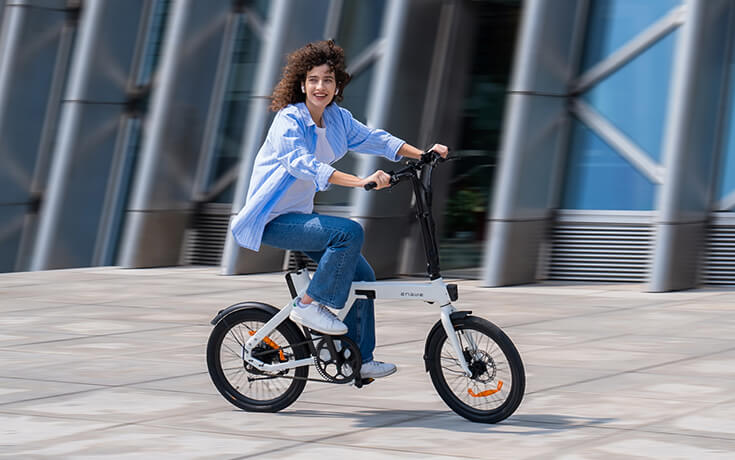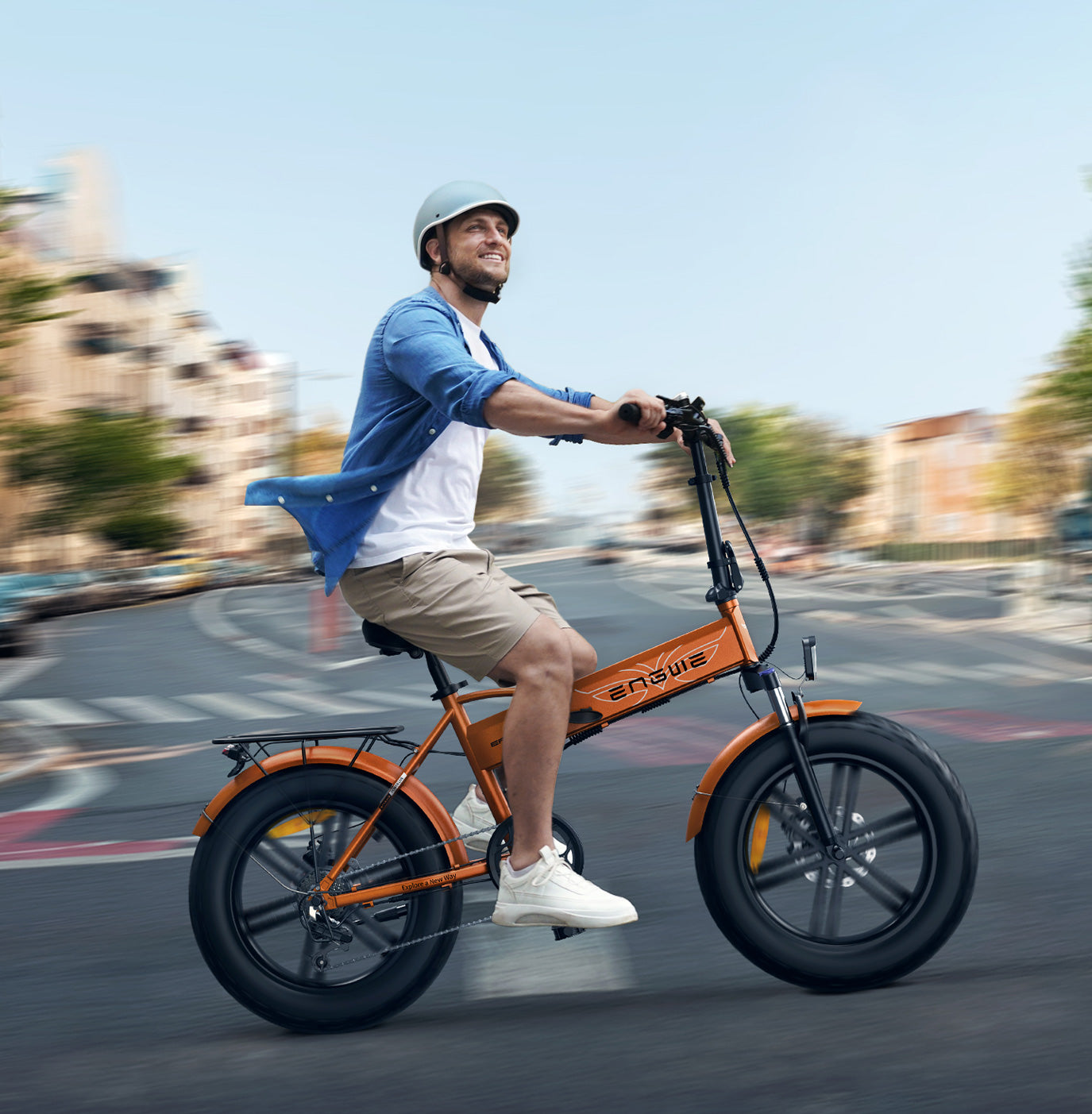The world of cycling is booming, with two distinct trends taking center stage: electric bike vs normal bike. Companies like Engwe are at the forefront of the e-bike revolution, offering stylish, powerful, and affordable options for riders of all experience levels. While e-bikes offer a technological twist that simplifies commutes and expands riding horizons, normal bikes remain a timeless symbol of exercise, freedom, and eco-conscious transportation.
Ultimately, the "best" bike depends entirely on your individual needs and preferences. This guide will explore the strengths of both e-bikes and normal bikes, helping you make an informed decision about which ride best suits your cycling goals.

Understanding Electric Bikes VS Normal Bikes
1. Electric Bikes
Electric bikes, or e-bikes, have become a game-changer in the cycling world. They offer a powerful assist that can transform your rides, making them easier and more enjoyable. Let's delve into how e-bikes work and the advantages they bring, particularly when considering a brand like Engwe Bikes.
1) How E-bikes Work
At the heart of an e-bike lies a combination of two key components: a motor and a battery. The motor, typically located in the front or rear hub of the wheel, provides an extra boost of power when you pedal. Sensors on the bike detect your pedaling motion and activate the motor accordingly. Two primary categories of pedal assist equipment exist:
- Cadence Sensor: This sensor detects how fast you're pedaling and provides motor assistance based on that speed. The faster you pedal, the more assistance you receive.
- Torque Sensor: This sensor detects how much force you're applying to the pedals and provides motor assistance based on your effort. The harder you pedal, the more assistance you get.
The motor receives its electric power from the battery. E-bike batteries are typically lithium-ion, offering a good balance of power, weight, and lifespan. The range of an e-bike on a single charge depends on the battery capacity, motor power, terrain, and your riding style.
2) Benefits of E-bikes
E-bikes offer a multitude of advantages for cyclists of all levels, some of the main ones including:
- Effortless Hill Climbing: No more dreading those steep inclines! The motor on an e-bike provides a welcome boost, making hills significantly easier to conquer.
- Extended Range: Ride further and explore more! E-bikes allow you to cover longer distances without feeling exhausted, opening up new cycling adventures.
- Reduced Strain: The motor assistance on e-bikes eases the strain on your knees and joints, making cycling a more accessible and enjoyable activity for everyone.
With their versatility and ease of use, e-bikes are a compelling choice for those seeking a fun and convenient way to get around. And for people interested in electric bikes, Engwe Bikes is a brand worth considering. Engwe's e-bikes combine the above three e-bike advantages: most of them have powerful motors and can handle even the toughest climbs with ease; many Engwe bike models have impressive battery range, allowing you to explore further on a single charge; they are often equipped with comfortable seats and ergonomic designs to further reduce stress on your body.

2. Normal Bikes
Normal bikes, also known as traditional bikes or pushbikes, have been the cornerstone of cycling for over a century. Their enduring appeal lies in their simplicity, affordability, and the direct connection they provide between rider and machine.
1) Core Components of Normal Bikes
These bikes rely solely on human power for propulsion and their core components include:
- Frame: The main structure of the bike, typically made from steel, aluminum, or carbon fiber.
- Fork: The front assembly that holds the wheel and handlebars, allowing for steering.
- Handlebars: Controls for steering and braking.
- Wheels: Comprised of rims, spokes, and tires, these provide a rolling surface for the bike.
- Brakes: Mechanisms that slow down or stop the bike's wheels.
When you pedal, the force is transferred through the cranks, chain, and cassette to the rear wheel, propelling the bike forward. Simple and intuitive, normal bikes require minimal maintenance and offer a straightforward riding experience.
2) Advantages of Normal Bikes
Normal bikes offer a multitude of benefits for cyclists who value control, affordability, and a pure cycling experience, providing a great alternative to electric bikes:
Simplicity: With fewer moving parts compared to e-bikes, normal bikes are easier to maintain and repair.
Affordability: Generally less expensive than e-bikes, normal bikes offer a great entry point into the world of cycling.
Lightweight: Without the added weight of a motor and battery, normal bikes are easier to maneuver and handle.
Normal bikes are a timeless choice for those who enjoy the challenge and physical benefits of cycling. They offer a pure riding experience that allows you to explore the world at your own pace and power.
Cost Considerations: Electric Bike vs. Normal Bike
When choosing between an electric bike and a normal bike, cost is a significant factor. Let's delve into the upfront costs and long-term expenses associated with each option.
1. Upfront Costs
- Electric Bikes: E-bikes typically have a higher upfront cost than normal bikes due to the added complexity of the motor, battery, and control systems. Prices can vary widely depending on brand, motor power, battery capacity, and features. While Engwe Bikes offer a range of affordable e-bikes compared to other brands on the market, they generally require a larger initial investment compared to normal bikes.
- Normal Bikes: Normal bikes are significantly more affordable than e-bikes. Prices can range from budget-friendly options to high-end performance bikes, but overall, they offer a lower entry point into cycling. This makes them a great choice for budget-conscious riders or those new to cycling.
2. Long-Term Expenses
- Maintenance: Both e-bikes and normal bikes require regular maintenance, such as tire inflation, chain lubrication, and brake adjustments. However, e-bikes may require additional maintenance for the motor and battery, potentially increasing overall maintenance costs. Even some electric bikes known for their durability and ease of maintenance, such as the Engwe Engine Pro 2.0, Engwe P275 Pro, etc., also require a certain level of extra care of the electrical components.
- Energy Costs: Electric bikes incur a small ongoing cost for electricity to recharge the battery. However, this cost is typically minimal compared to the fuel costs associated with gas-powered vehicles. Normal bikes have no ongoing energy costs.
- Potential Savings: E-bikes can potentially lead to savings in other areas. For example, if you use an e-bike to commute to work, you may save money on public transportation or parking fees. Additionally, the health benefits of cycling can lead to reduced healthcare costs in the long run.

Maintenance Needs: E-bike VS Normal Bike
Both electric bike vs normal bike require some level of maintenance to ensure smooth operation and safety. However, the complexity of e-bikes introduces additional maintenance considerations compared to their traditional counterparts.
1. Electric Bikes
While e-bikes offer a convenient and powerful ride, they demand a bit more attention in the maintenance department. Here's a breakdown of the key areas:
- Motor and Battery: These are the heart of an e-bike and require specific care. Most e-bikes are designed for durability, but certain practices can extend the lifespan of these components. For example, batteries typically have a set lifespan, but proper charging habits (avoiding extreme temperatures and deep discharges) can maximize their performance. It's important to consult your Engwe Bike's manual for specific recommendations on motor and battery care, as there may be additional tips specific to their design.
- Regular Maintenance: In addition to the motor and battery, e-bikes require regular maintenance tasks similar to normal bikes, such as drive train maintenance, brakes and tires.
2. Normal Bikes
Normal bikes are known for their simplicity and require less frequent maintenance compared to e-bikes. Here are the main tasks to keep your normal bike running smoothly:
- Drivetrain maintenance: Just like e-bikes, keeping your chain clean and lubricated is key for smooth operation. Additionally, adjusting gears and derailleur may be necessary from time to time.
- Brakes: Regular checks and adjustments ensure proper stopping power.
- Wheels: Maintaining proper tire pressure and checking for wear and tear are essential for safety and performance.
- General upkeep: Keeping your bike clean and free of rust can help prolong its lifespan.
Making Your Decision: Normal Bike VS Electric Bike
Here's a quick recap to help you choose:
Choose a Normal Bike if: You prioritize a low-maintenance, zero-emission option; you enjoy the physical challenge of cycling; you have a limited budget; you primarily ride on flat terrain for short distances.
Choose an electric bike if: You desire a comfortable and convenient ride with pedal assist; you plan on tackling hills or longer distances; you want to reduce your reliance on car travel; you're comfortable with some additional maintenance.
Remember, the perfect bike is the one that gets you riding and enjoying the many benefits of cycling.
Final Words
Electric bike vs normal bike each has its own advantages and characteristics. Electric bikes can accompany you to conquer hills and cruise farther, making them ideal for those who like comfort and convenience; traditional bikes allow you to experience the pure joy of riding, making them ideal for sports enthusiasts and budget-conscious riders. Consider your needs, terrain and riding style, choose a bike that's right for you, then embark on your perfect ride, feel the wind in your hair and explore the world on two wheels!
You may also want to read:
Learn More About the Urban E Bike with the Ultimate Guide
E Dirt Bike Guide: Learn More About Electric Dirt Bike
Things to Know About Electric Mountain Bikes
